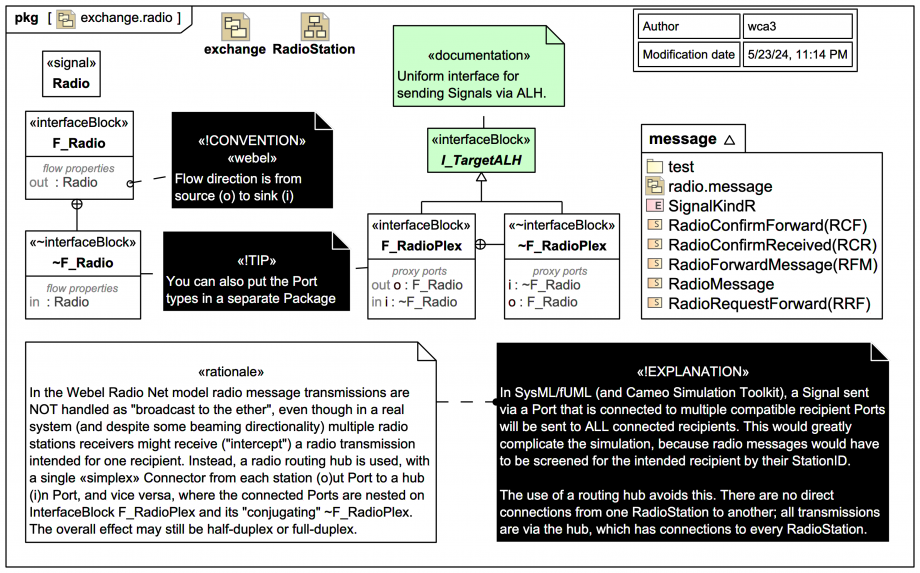Tags and keywords
Radio and associated InterfaceBlocks for use as Port types. The InterfaceBlock F_RadioPlex nests 'o' and 'i' Ports of type F_Radio and ~F_Radio, which are "conjugated" in ~F_RadioPlex.You might well be asking why Signal Radio does not have any attributes such as f:RadioFrequency (which could then be conveniently inherited). If it were not for this quirk in Magic Model Analyst® (Cameo Simulation Toolkit®) they would!
We'll deal with that when we see the more specific RadioMessage types, which are in a separate Model package.
Looking ahead to how the Ports will be used and connected on RadioStation items in the final RadioNet:
In the Webel Radio Net model radio message transmissions are NOT handled as "broadcast to the ether", even though in a real system (and despite some beaming directionality) multiple radio stations receivers might receive ("intercept") a radio transmission intended for one recipient. Instead, a radio routing hub is used, with a single «simplex» Connector from each station (o)ut Port to a hub (i)n Port, and vice versa, where the connected Ports are nested on InterfaceBlock F_RadioPlex and its "conjugating" ~F_RadioPlex. The overall effect of the system may still be half-duplex or full-duplex.
We'll see exactly why an intermediary radio routing hub is used later, but first, let's examine the more specific RadioMessage family of Signals.


